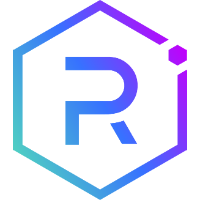
Raydium priceRAY
RAY/USD price calculator
Raydium market Info
Live Raydium price today in USD
Do you think the price of Raydium will rise or fall today?
Now that you know the price of Raydium today, here's what else you can explore:
How to buy Raydium (RAY)?How to sell Raydium (RAY)?What is Raydium (RAY)What would have happened if you had bought Raydium (RAY)?What is the Raydium (RAY) price prediction for this year, 2030, and 2050?Where can I download Raydium (RAY) historical price data?What are the prices of similar cryptocurrencies today?Want to get cryptocurrencies instantly?
Buy cryptocurrencies directly with a credit card.Trade various cryptocurrencies on the spot platform for arbitrage.Raydium price prediction
When is a good time to buy RAY? Should I buy or sell RAY now?
About Raydium (RAY)
What Is Raydium?
Raydium is a decentralized Automated Market Maker (AMM) operating on the Solana blockchain. It stands out in the DeFi space by directly integrating with Serum, Solana's largest decentralized exchange (DEX), to facilitate its swap system. Launched in February 2021, Raydium quickly gained traction due to its unique approach to addressing common DeFi challenges, such as slow transaction speeds and high costs, particularly evident in Ethereum-based AMMs. By leveraging the Solana blockchain, Raydium offers a solution characterized by speed and affordability, making it a significant player in the burgeoning DeFi landscape.
The platform's integration with the Solana ecosystem and Serum DEX enhances its liquidity, a crucial factor for any AMM. This integration allows Raydium to access a broader range of liquidity sources, improving the trading experience for its users. The growing interest in DEXs and the AMM model, as seen in platforms like Uniswap, Aave, and SushiSwap, underscores the potential and importance of Raydium in the DeFi space.
Resources
Official Documents: https://raydium.gitbook.io/raydium/
Official Website: https://raydium.io/
How Does Raydium Work?
Raydium operates using a constant function automated 440aa635-dfbc-49cb-8c58-fe361f862700 maker (CFAMM) model, a system that maintains a constant product of the assets in its liquidity pools, regardless of trading activities. This model, combined with price data from Serum's order books, enables Raydium to offer up to 20 different price orders with minimal spreads, making transactions more cost-effective. The platform's core innovation lies in its integration of an order book within its AMM, a feature that sets it apart from traditional AMMs.
This integration with Serum's on-chain order book is mutually beneficial. Raydium's liquidity pools can feed into Serum's order book and vice versa, allowing Serum users to access Raydium's liquidity pools. This synergy creates a more efficient and fair trading environment, with Raydium strategically placing orders in Serum's backlog to ensure reliable order matching and fair asset pricing.
Furthermore, Raydium's ecosystem is bolstered by Solana's technical capabilities, offering a decentralized, liquid, and cost-effective trading experience. The platform supports various DeFi services, including yield farming, where liquidity providers are rewarded with a portion of transaction fees. Raydium AcceleRaytor serves as a launchpad for new projects within the Solana ecosystem, facilitating initial liquidity and capital accumulation for these projects.
What Is RAY Token?
RAY is the native utility token of the Raydium ecosystem. It was initially launched with a supply cap of 555 million tokens. The RAY token serves multiple purposes within the Raydium ecosystem. Holders can stake their RAY tokens to earn interest (a portion of the trading fees) and participate in the governance of the protocol, albeit in a limited capacity. The distribution of RAY tokens is carefully structured, with allocations for liquidity mining, partnerships, ecosystem development, the community, and advisors.
What Determines Raydium’s Price?
The price of Raydium (RAY), like any cryptocurrency, is influenced by a complex interplay of factors within the broader blockchain and cryptocurrency markets. A primary driver is market demand and supply dynamics, which are themselves shaped by various elements including the platform's technological advancements, adoption rates, and overall performance of the DeFi sector. As Raydium operates on the high-speed, low-cost Solana blockchain and offers unique features like integration with Serum's decentralized exchange, its appeal to users seeking efficient and cost-effective DeFi solutions can significantly impact its demand. Moreover, the success and growth of the Solana ecosystem directly influence Raydium's value, as increased adoption of Solana often leads to heightened activity and liquidity on Raydium, thereby potentially boosting its token price.
Another critical factor is investor sentiment, which can be swayed by news, technological updates, and broader market trends. For instance, positive developments in the Solana network, such as upgrades or successful partnerships, can create bullish sentiment for RAY. Conversely, issues like network outages or security breaches can lead to bearish trends. Additionally, the overall sentiment in the cryptocurrency market, influenced by macroeconomic factors, regulatory news, and performance of major cryptocurrencies like Bitcoin and Ethereum, also plays a significant role. As investors and traders in the crypto space are highly responsive to news and trends, these external factors can cause significant price fluctuations for RAY.
Lastly, Raydium's native functionalities, such as staking rewards, governance mechanisms, and its role in liquidity provision and yield farming, contribute to its intrinsic value. The utility of the RAY token within the Raydium ecosystem, including its use in governance voting and as a staking asset, adds to its demand among users who are not just investors but also active participants in the platform's DeFi offerings. As the DeFi sector continues to evolve, with increasing interest in decentralized exchanges and liquidity pools, Raydium's position as a key player in this space could further influence its price, making it a noteworthy asset in the portfolios of cryptocurrency enthusiasts and investors focused on the DeFi market.
For those interested in investing or trading Raydium, one might wonder: Where to buy RAY? You can purchase RAY on leading exchanges, such as Bitget, which offers a secure and user-friendly platform for cryptocurrency enthusiasts.
Bitget Insights




RAY/USD price calculator
RAY resources
Tags:
What can you do with cryptos like Raydium (RAY)?
Deposit easily and withdraw quicklyBuy to grow, sell to profitTrade spot for arbitrageTrade futures for high risk and high returnEarn passive income with stable interest ratesTransfer assets with your Web3 walletWhat is Raydium and how does Raydium work?
Global Raydium prices
Buy more
FAQ
What factors are influencing the current price of Raydium (RAY)?
How can I buy Raydium on Bitget Exchange?
Is Raydium a good investment?
What is Raydium's market capitalization and why does it matter?
What are the risks associated with investing in Raydium?
How does Raydium's price correlate with Solana's price movements?
Where can I track real-time price changes for Raydium?
What upcoming events could impact the price of Raydium?
What is the historical price trend of Raydium?
How does staking Raydium affect its price and my potential returns?
What is the current price of Raydium?
What is the 24 hour trading volume of Raydium?
What is the all-time high of Raydium?
Can I buy Raydium on Bitget?
Can I get a steady income from investing in Raydium?
Where can I buy Raydium with the lowest fee?
Related cryptocurrency prices
Prices of newly listed coins on Bitget
Hot promotions
Where can I buy Raydium (RAY)?
Video section — quick verification, quick trading









